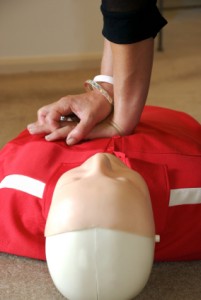AHA Releases New CPR Guidelines

The new AHA Guidelines emphasize the importance of chest compressions and their quality. Photo istock/Andrew Simpson
Compressions. Airway. Breathing. If you can remember the acronym CAB, you know the priority placed on each element of CPR in the just-released 2010 Guidelines for CPR from the American Heart Association. For adults, the new Guidelines recommend a chest compression rate of at least 100 compressions per minute and a depth of two inches.
Keys to survival from sudden cardiac arrest (SCA) include immediate recognition and activation of the emergency response system, early CPR, and rapid defibrillation with an AED. 9-1-1 calltakers and emergency medical dispatchers should be appropriately trained to provide telephone CPR instructions. According to the Guidelines, telecommunicators should:
- Immediately ask straightforward questions to determine if the patient is conscious and breathing normally in order to identify patients with possible cardiac arrest.
- Be specifically educated in how to recognize abnormal breathing so they can more easily recognize gasping and cardiac arrest. When telecommunicators ask if breathing is present, bystanders often misinterpret agonal gasps or abnormal breathing as normal breathing.
- Recommend CPR for unresponsive victims who are not breathing normally because most are in cardiac arrest and the frequency of serious injury from compressions in persons not in arrest is very low.
- Instruct untrained lay rescuers to provide hands-only CPR for adults with sudden cardiac arrest.
- Include rescue breathing in their telephone CPR instructions for victims with a high likelihood of asphyxial cause of arrest (e.g., children or drowning victims).
To improve patient outcome, all telecommunicators and EMS providers must be trained to recognize acute coronary syndrome symptoms, even if the presentation is atypical. The Guidelines state that it’s reasonable for telecommunicators to advise patients with potential cardiac symptoms to chew an aspirin (160 to 325 mg), as long as the patient has no history of aspirin allergy and no signs of active or recent gastrointestinal bleeding.
The Guidelines were printed in the November issue of Circulation and are available online at http://circ.ahajournals.org/content/vol122/18_suppl_3/. Watch for more information specific to telecommunicators in our February 2011 CDE article.
About the Author
Keri Losavio is the editor of APCO’s Public Safety Communications. Contact her at psceditor@apcointl.org.

